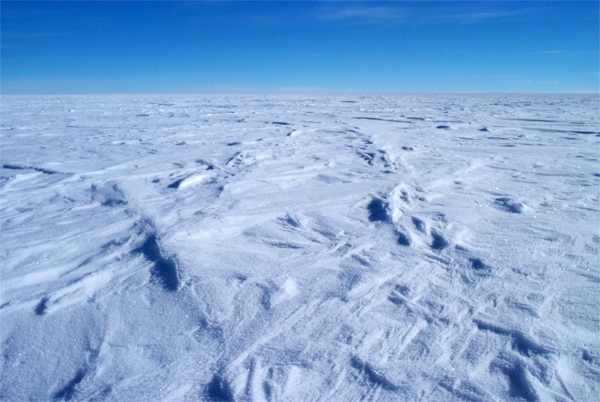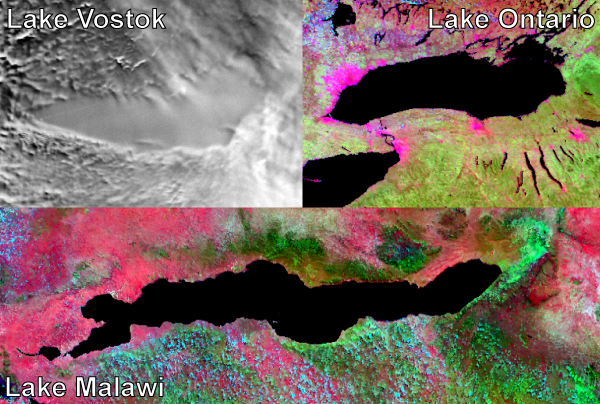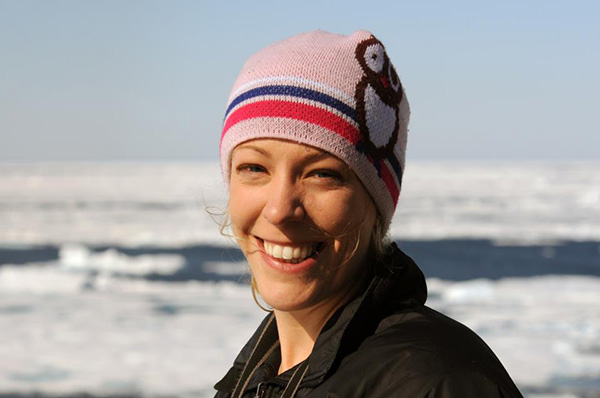
by Kathryn Hansen Tuesday, February 7, 2012

The ice above Lake Vostok is a flat, glaring white expanse of ice. Michael Studinger

Lake Vostok in Antarctica is one of the largest freshwater lakes on Earth. Michael Studinger

Kathryn Hansen is an associate editor at EARTH and writes the CryoScoop blog. Karen Frey
Valery Lukin, director of the Russian Antarctic program, confirmed today that a team of Russian scientists has completed an Antarctic drilling project two decades in the making, according to the Associated Press. The team finished drilling on Feb. 5 through 3.25 kilometers of ice to reach Lake Vostok, the largest subglacial lake in the world.
Lake Vostok, a freshwater lake as large as Lake Ontario in North America, has been sealed below the East Antarctic Ice Sheet for at least 20 million years. Breaking through into the lake will be first physical contact with any of the continent’s 300-plus subglacial lakes that have been observed with radar instruments.
“I am hoping the Russian scientists and drillers are able to obtain water samples from the lake so we can learn more about the chemistry and microbiology of the lake waters,” says Mark Skidmore of Montana State University.
Indeed, the Russian team plans to return next year during the Antarctic field season to collect samples of lake water. Analysis of the lake water’s chemistry and biology could inform scientists about habitability of one of the most extreme regions on Earth, and of the frigid landscapes beyond Earth.
The effort has not been without its challenges. The average temperature during the short summer at Vostok Station is minus 30 degrees Celsius. Also, engineers had to devise a drilling method that would prevent contamination of the freshwater lake and core samples.
Drilling into subglacial water systems, while risky, is a worthwhile kind of exploration, says Tom Neumann, a glaciologist at NASA’s Goddard Space Flight Center. “I have no doubt the science from subglacial water will be extremely valuable, but every precaution should be taken to ensure that such exploration doesn’t destroy the system we want to study,” Neumann says. “These really are some of the most pristine and least-accessible areas on the planet.”
© 2008-2021. All rights reserved. Any copying, redistribution or retransmission of any of the contents of this service without the expressed written permission of the American Geosciences Institute is expressly prohibited. Click here for all copyright requests.